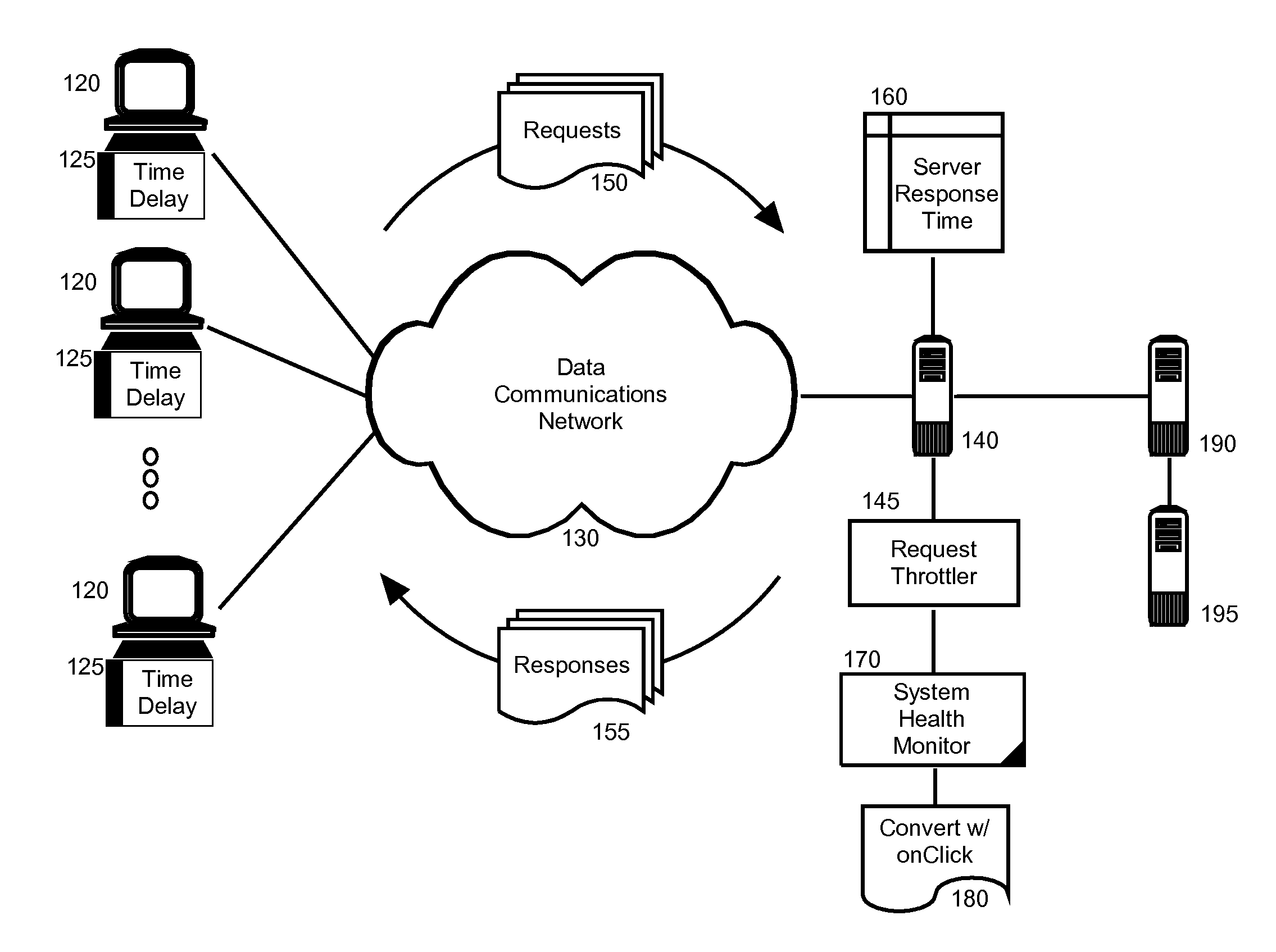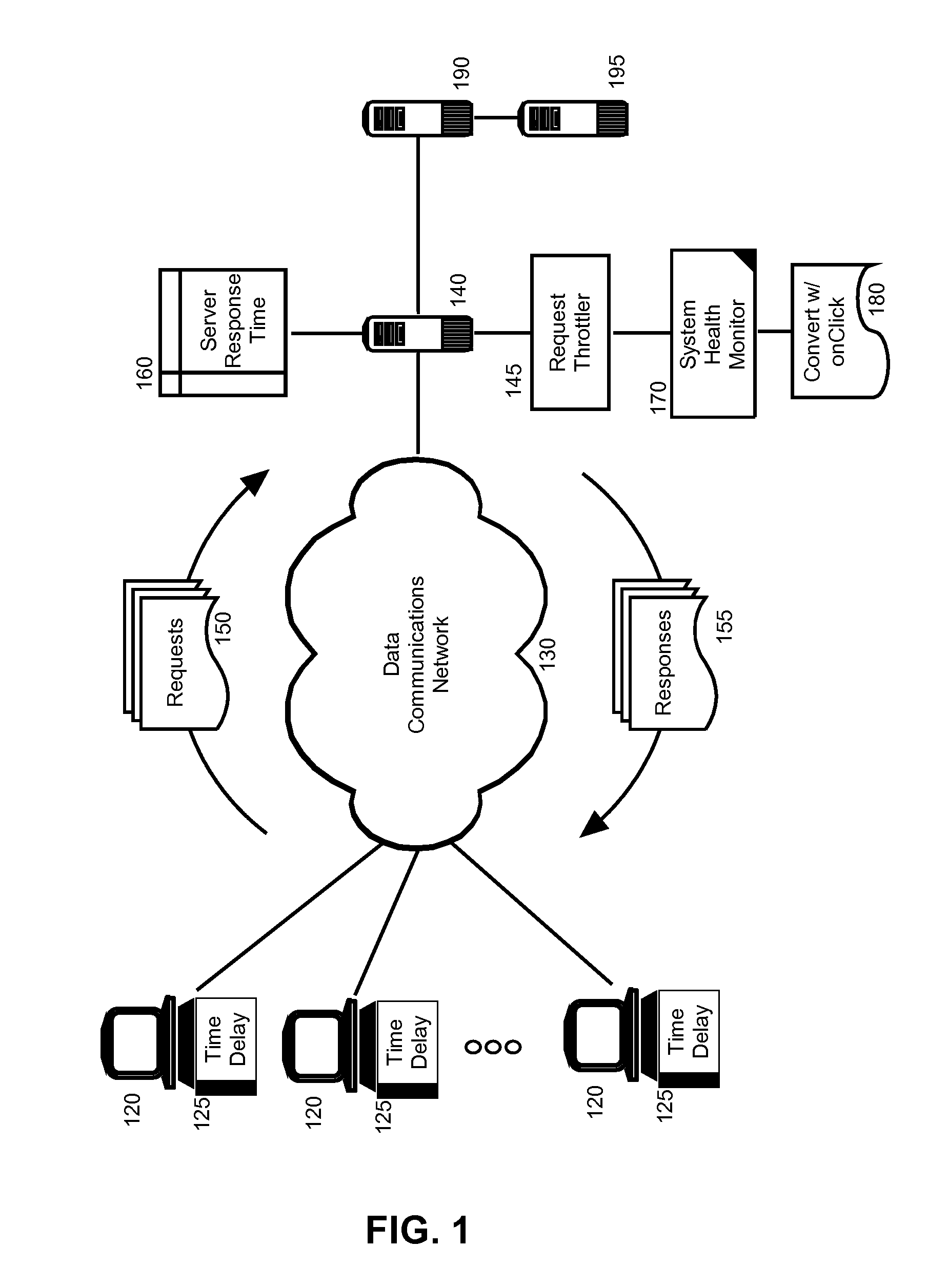Reducing workload on a backend system using client side request throttling
- Summary
- Abstract
- Description
- Claims
- Application Information
AI Technical Summary
Benefits of technology
Problems solved by technology
Method used
Image
Examples
Embodiment Construction
[0014]Embodiments of the present invention address deficiencies of the art in respect to workload management of backend systems and provide a novel and non-obvious method, system and computer program product for limiting a request rate from a client based on a health state of a server system. In one embodiment of the invention, a computer-implemented method for limiting a request rate from a client based on a health state of a server system that includes monitoring a server system, determining a measure of health of the server system, sending the determined measure of health to a client submitting a request to the server system and receiving a subsequent request from the client that is delayed by a time period, wherein the time period is based at least in part upon the determined measure of health.
[0015]In an aspect of this embodiment, the computer-implemented method can further include receiving server system CPU utilization, determining an approximate predicted real server respons...
PUM
 Login to View More
Login to View More Abstract
Description
Claims
Application Information
 Login to View More
Login to View More - R&D
- Intellectual Property
- Life Sciences
- Materials
- Tech Scout
- Unparalleled Data Quality
- Higher Quality Content
- 60% Fewer Hallucinations
Browse by: Latest US Patents, China's latest patents, Technical Efficacy Thesaurus, Application Domain, Technology Topic, Popular Technical Reports.
© 2025 PatSnap. All rights reserved.Legal|Privacy policy|Modern Slavery Act Transparency Statement|Sitemap|About US| Contact US: help@patsnap.com



